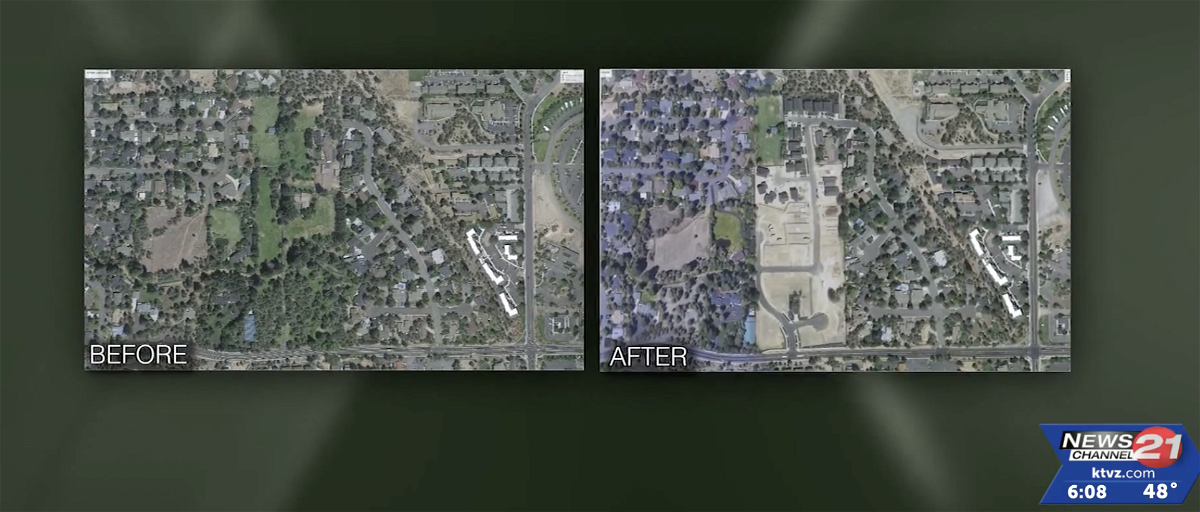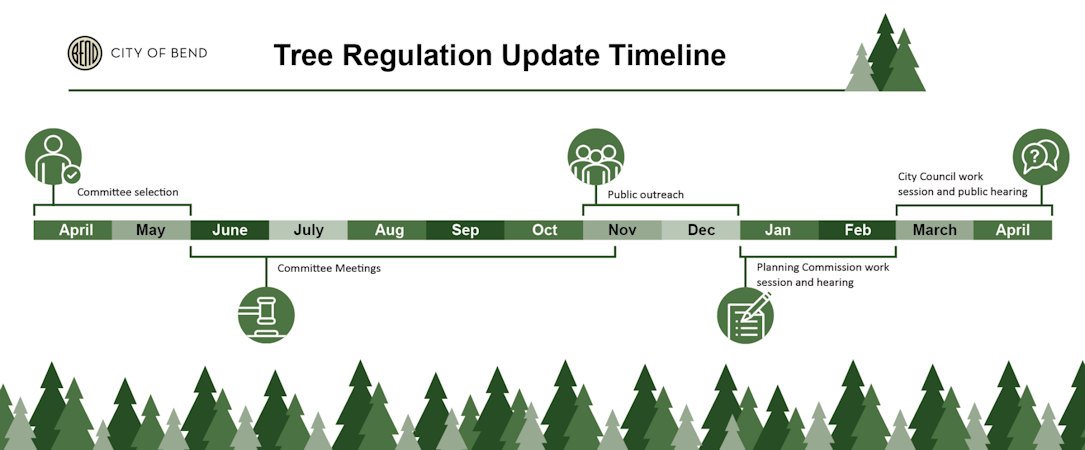On split vote, Bend advisory panel recommends city code changes to spare more big trees during development

Goal is to 'strike a balance,' not hamstring more needed housing
BEND, Ore. (KTVZ) -- On a split vote Tuesday, Bend's Tree Regulation Update Advisory Committee recommended to city councilors several changes to the city's development code, intended to preserve larger trees during new development while not creating a barrier to building more needed housing.
The advisory panel voted 8-5 to recommend a variety of changes to the Bend Development Code, which regulates how and when trees are allowed to be removed during development.
The process arose out of community members raising concerns around seeing how many trees were being cut down during new development projects.
In response, the city council created a temporary committee to research ways more significant trees could be preserved during new development, while also not interfering with building the housing units the community needs.
Under state law, standards, conditions and procedures regulating housing must be clear and objective, and this process is intended to develop such standards to regulate how and when trees are preserved.
"These recommended changes, if adopted, will strike a balance, and provide the framework to preserve more trees than what is happening now," the city said in announcing a milestone in the ongoing update process.
Corie Harlan, the Cities & Towns Program Director for Central Oregon LandWatch and committee member of the Tree Regulation Advisory Update Committee, said these tree code recommendations to City Council are a step in the right direction.
“LandWatch appreciates that this committee came in with different opinions and worked hard to strike a balance that would preserve more trees and build needed housing. If implemented with rigor and oversight, these updates should preserve more of our tree canopy,” Harlan said.
“We look forward to continuing to participate in the public process ahead - and then working with the city to closely monitor the implementation of these code updates, to ensure they lead to our shared, desired outcomes.”
A full draft recommendation detailing different options developers can follow to preserve trees will be released at the beginning of next year. Some highlights include:
- Developers would be required to preserve 20% of priority trees, which are defined as 20 inches in diameter or larger.
- Another option for developers is to preserve 25% of what is called the total “diameter at breast height” on a site. Diameter at breast height is the measurement of a tree’s diameter measured at 4 ½ feet off the ground. For this option, that means diameters of all trees that have a 6-inch diameter or larger on a development site would be added together, and 25% of that total would need to be preserved.
- If saving trees is not possible on a certain site, developers would also have the option to either replace a certain number of trees for every tree that was removed from the site. Bigger trees that were removed would require more trees to be planted in its place.
- If none of these options can be achieved, a developer may pay a “fee-in-lieu,” meaning the developer must pay a certain amount of money to mitigate for a certain number of trees. The fund would help with purchasing, planting and maintaining trees throughout the city.
- In general, developers would be required to preserve at least 5% of the total diameter at breast height of trees 6 inches or greater on a site. Lots that are an acre or less would be exempted from this requirement. The developer or property owner would still need to replant trees or pay the fee in lieu.
Geoff Harris, the president of Solaire Homebuilders and the chair of the committee, said he was thankful to serve on a committee full of community-minded volunteers that worked collaboratively to craft a series of clear and objective recommendations for the Planning Commission and City Council.
“Part of what made this process a success was that the committee was made of a diverse group of stakeholders, representing developers, neighborhoods, arborists, architects, environmental and equity interests,” Harris said. “Thanks to the Bend City Council for giving the public the chance to advise and inform ahead of the formal land-use process for a code update.”
A full draft recommendation will go before the Planning Commission and Bend City Council early next year. Please visit the Tree Regulation Code Update webpage for information about public outreach opportunities that will begin in January.
